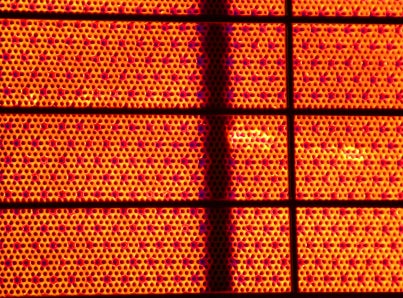How To Install a Gas Burning Wall Heater
Gas-burning wall heaters come in two basic categories: Direct vent, and standard or conventional vent. Direct vent wall heaters mount to the wall and vent directly through the wall to the atmosphere. Usually, a power vent fan forces the combustion gases out the vent. The same terminal fitting that directs combustion gases to the atmosphere brings fresh air into the sealed combustion chamber of the unit for proper combustion. Standard or conventional vented gas-burning appliances direct their combustion gases to the atmosphere through a standard single wall or double-wall (B-vent) gravity vent pipe without the use of a power vent.
Preparation
- Choose the prper location for the wall heater taking into consideration availability of electrical, the exterior vent termination and routing of the gas line.
- Size the appliance gas line to accommodate the new heater as well as all the existing gas appliances. The entire gas pipe system may need to be increased in size to accommodate the new gas heater.
Installing the gas piping
- Route the new gas line to the appliance location. Terminate the gas line in a gas shut-off valve.
- Plug the gas shut-off valve and test the new gas installation according to Uniform Mechanical Code testing standards or the standards in effect in your area.
- After testing and inspection, connect the new gas piping into the existing system.
Preparing for the vent termination
- Using a template usually included with the wall heater, mark the location of the unit vent where it passes through the outside wall.
- Cut the vent hole with a sabre saw or sawzall.
Mounting the wall heater
- Mark the mounting locations on the wall. Use the supplied template to locate the mounts properly.
- Disassemble the wall heater.
- Assemble the vent pipe to the heater vent collar. Use the appropriate gaskets or duct sealant as directed by the manufacturer installation instructions.
- Mount the wall heater securely to the wall with the proper fasteners such that the vent pipe extends through the outside wall.
- Connect the gas line to the wall heater gas valve with hard piping or an approved gas flex connector.
Installing the vent termination fitting
- On the outside of the house, slide the vent termination fitting over the end of the vent pipe assembly.
- Fasten the vent termination flange to the siding using the appropriated plated or galvanized fasteners.
- Caulk the seam where the vent termination flange meets the outside wall.
Tips
Make certain that the vent termination will be located the proper distance from windows, doors, exhaust fan terminations and other openings into the home as well as the ground.
Verify that the exhaust termination will not be obstructed by shrubbery, trees or other landscaping features.
In most cases, wall heaters are classified as supplemental heating units. This means they are designed primarily to augment the home’s primary central heating unit. Any attempt to use a supplemental heating unit as a sole source of heat in a room or occupied space will usually result in unsatisfactory operation. Condensation may build up in the unit and on the floor below causing damage to the floor, the unit, or both.
Discuss this and other Home Improvement Topics in our How To Forum





